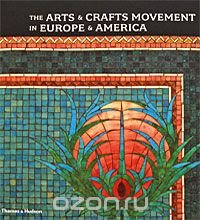At the turn of the last century, the Arts and Crafts movement transformed not only how objects looked but also how people looked at objects. It provided a framework for essential issues that are still debated today, such as the conflict between standardization and individuality, or the problem of defining what kind of design most benefits society. As the most industrialized country, Britain was also the first to generate a movement to counter what was seen as the malevolent effects of mass production. Protagonists such as John Ruskin and William Morris championed "joy in labour" - the moral and spiritual uplift that would come with the revival of making objects by hand. The improvement of working conditions, integration of art into everyday life, and an "honest" aesthetic resulting from the use of indigenous materials and native traditions were also central to the movement's philosophy. At the end of the 19th century, these Arts and Crafts ideals were appropriated and adapted by... Это и многое другое вы найдете в книге The Arts & Crafts Movement in Europe & America (Wendy Kaplan)
The Arts & Crafts Movement in Europe & America Wendy Kaplan
Подробная информация о книге «The Arts & Crafts Movement in Europe & America Wendy Kaplan». Сайт не предоставляет возможности читать онлайн или скачать бесплатно книгу «The Arts & Crafts Movement in Europe & America Wendy Kaplan»
